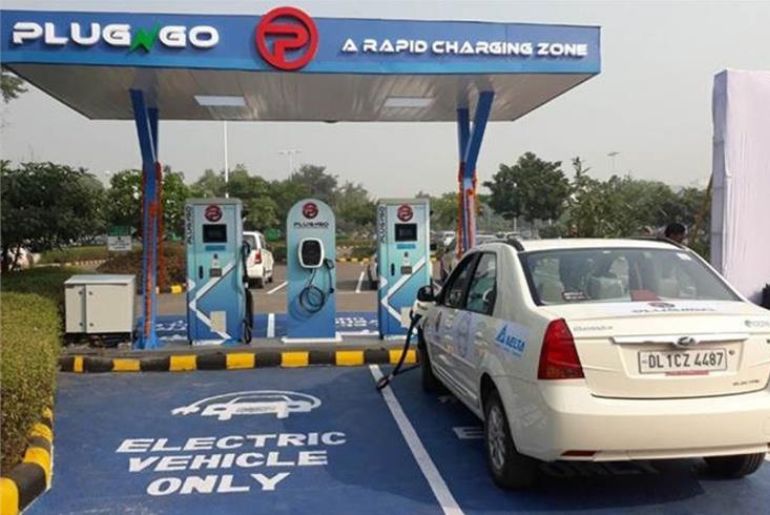Sales of EV are expanding quickly in India, although they differ greatly among the 36 states and union territories that make up the nation. The present centers of India’s EV demand are the country’s wealthier, more populated, and developed tier 1 cities, while tier 2 cities are seeing an increase in EV adoption, according to a recent BloombergNEF research.
These tier 2 cities have the potential to become the next major hub for EV demand due to their sizable auto market and EV manufacturers’ expansion plans. The key to increasing EV sales in smaller cities with lower knowledge and disposable income is policy support.
Finding out which states and cities might lead the way in future growth on an area level might be facilitated by examining past and present trends in EV adoption. In order to accomplish this, BNEF examined sales data for electric vehicles and cars in 207 cities located across ten Indian states: Uttar Pradesh, Gujarat, Haryana, Karnataka, Kerala, Madhya Pradesh, Maharashtra, Rajasthan, Tamil Nadu, and Delhi.
Bengaluru leads the adoption of EVs among tier 1 cities: Karnataka’s state capital is ahead of other tier 1 cities in EV adoption, both in the passenger vehicle and two-wheeler segments. EV growth in wealthier cities is driven by several factors, such as a young demographic with regular disposable income, the expanding presence of pure-play EV cab operators and an increasing availability of EV models to choose from.
Within tier 2 cities, state capitals generally lead the growth of electric car sales. In 2023, Rajasthan’s capital Jaipur accounted for more than 79% of all electric cars sold in the state’s five tier 2 cities that were analysed.
Consumers in Jaipur bought more than 2,400 electric cars in 2023, more than doubling from the less than 1,000 vehicles sold a year earlier. Lucknow, the capital of Uttar Pradesh, led the state’s stellar sales growth in 2023, with demand reaching 1,120 units. Kerala’s capital Thiruvananthapuram was at the forefront of volumes in the state with 840 electric cars sold. In Gurugram, a fast-growing city that shares a border with the national capital Delhi, nearly 1,570 electric cars were sold in 2023.
Most of India’s tier 2 cities do not have a robust EV ride-hailing market yet – which is a key pillar of rising EV sales in tier 1 cities. This means EV sales in smaller cities are entirely driven by private uptake.
Customers are less reliant on subsidies: Most private electric cars purchased in 2023 were not supported by upfront price subsidies. Just two out of the top 10 states for annual electric car sales had active subsidies as of the end of 2023. Even after several states exhausted their subsidy limit by the middle of the year, sales continued to hold steady.
Electric two-wheeler sales in some tier 2 markets have surpassed metropolitans: The annual growth rates of high-speed electric two-wheeler sales in tier 2 and tier 3 cities across the 10 states analyzed in this report surpassed those in tier 1 cities. In 2023, the annual rate of increase of total EVs sold in 70 tier 2 cities and 131 tier 3 cities was 51% and 30%, respectively. Electric two-wheeler markets in several tier 2 cities are far ahead of those in tier 1 cities.
In 2023, electric two-wheelers sold in Surat (20,150 vehicles) and Jaipur (18,600) exceeded those in Ahmedabad (17,300), Mumbai (13,800) and Chennai (13,710). Sales in Nagpur (13,730) were close to those in the state capital, Mumbai. Kolhapur and Indore are also quickly catching up, with sales reaching 9,320 and 9,200 vehicles, respectively, in 2023.
Tier 2 cities could be the next growth drivers for electric two-wheelers, but financial support is crucial in tier 3 cities: In 2023, the growth rate of the two-wheeler market in tier 2 cities was similar to that in tier 1. Automakers are rapidly expanding their sales and dealership networks in smaller cities, which will help improve consumer awareness and access to these vehicles. As the focus shifts to boosting demand from less affluent tier 3 cities, demand-side policy support, especially financial subsidies, will be needed unless prices fall fast enough for EVs to achieve upfront cost parity with gasoline vehicles.

